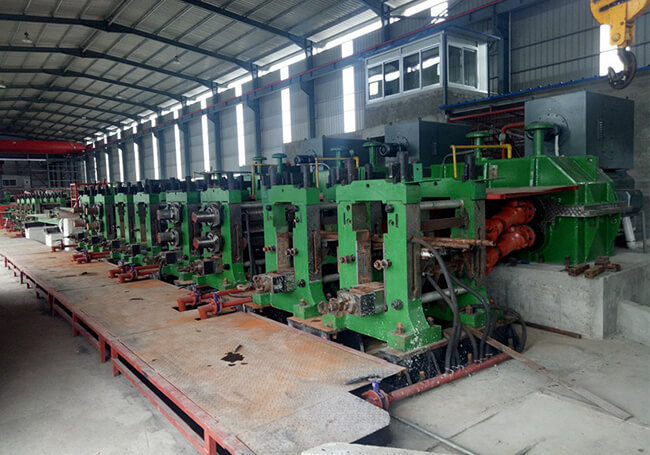The further development of the rolling mill is the development of the continuous rolling mill, and the series of large auxiliary equipment developed with it. Like all inventions, it had its small beginnings.
The credit for the first continuous rolling mill goes to Mr. George Bederson of Manchester, UK. He put into service this rolling mill, which was constantly working on the metal.
The rollers are placed closely in series, and the metal is guided directly from one channel to the other by guide rails without any human intervention. There are no interruptions, no catching or circulation, but a continuous forward transition of metal from the bite of the roughing rolls to the discharge of the finishing stands.
Each pair of rolls is accelerated according to the decrement of each pass through the carefully arranged transmission device to bear the corresponding elongation.
Continuous rolling of the billet in the plane is always at the same angle to its axis, flattening the mass.
To get elongation, compression needs to be done in a different plane than the angle of the shaft, similar to how a blacksmith rotates the metal on the corners of an anvil between each successive blow. Perfectly ensures the desired ending.
But this brings huge troubles to the maintenance and management of the rolling mill. One drivetrain is required above the ground line and another in the pit below it.
Access to these, as well as the rolls themselves, is severely hindered during replacement and adjustment.
The very necessary condition to change the compression plane is ensured by the use of torsion guides, whereby the metal rotates 90 degrees in travel between each successive pass, a device commonly used in these rolling mills.
Even the rolls themselves were severely hampered in terms of replacement and adjustment.
The very necessary condition to change the compression plane is ensured by the use of torsion guides, whereby the metal rotates 90 degrees in travel between each successive pass, a device commonly used in these rolling mills.
The exact matching of the corresponding speeds and passes of the rolls is difficult. We need to constantly adjust.
The final dimensional quality of the rolled product is determined by the rolling stands within the finishing mill.
The dimensional accuracy of the final product depends on many factors, including initial stock size, roll pass, temperature, microstructure, roll surface quality, roll and stand stiffness, and stock/roll friction conditions.
A rolling mill is where the rolling of steel takes place. It consists of one or more rolling mill stands and some auxiliary equipment in which auxiliary operations related to steel rolling are performed.
Judian is a manufacturer of steel rolling equipment, you are welcome to pay attention to us. Learn more about equipment.

Please send us your request and we reply to you with in 24 hours.
Submit Request